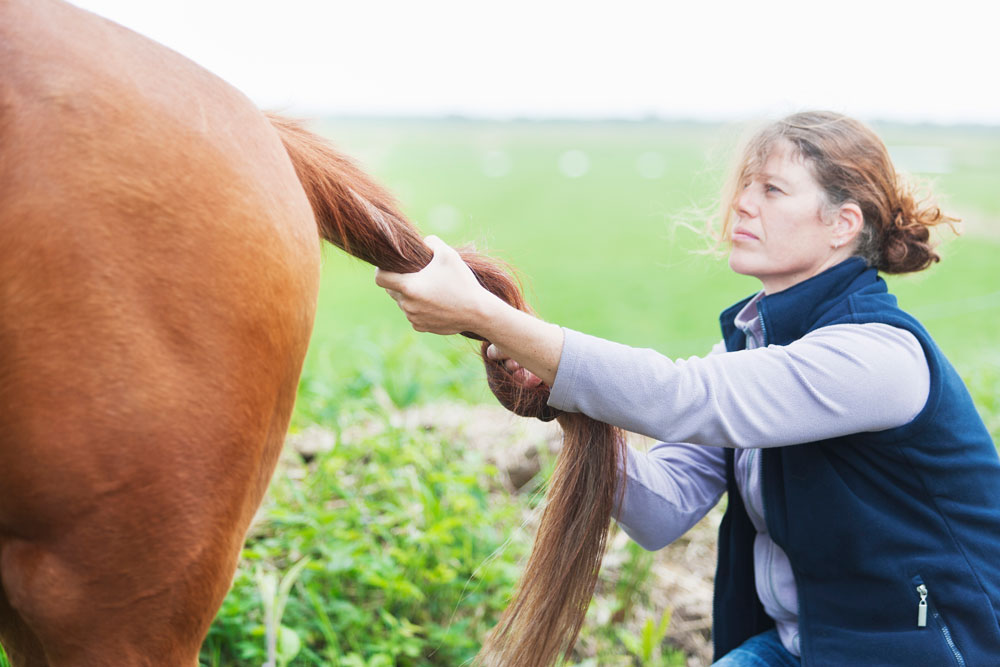
Exercise and physical therapy are extremely important for improving a horse’s back strength, function and stability. At the 2020 AAEPConvention, Erin Contino, DVM, MS, MCVSMR, Assistant Professor at Colorado State University’s College of Veterinary and Biomedical Sciences, presented some valuable ideas for horse owners to minimize equine back pain.
Contino reported that it is important to have an accurate diagnosis in order to individualize and target a treatment plan. She stressed that it is invaluable to “get the horse to the gym!”
A study on dynamic mobilization of eight horses for five days a week for three months demonstrated a positive effect on the multifidus muscle with improved muscle symmetry and improved cross-sectional area in six levels of the muscle. Core exercises include sternal lifts and lumbo-sacral tucks. (The multifidus muscle is a thin strip of tissue that starts at the sacral bone at the base of the spine and extends up to the axis—commonly referred to as the second cervical vertebra or C2. The multifidus muscle forms attachments between the individual vertebrae. Each part of the multifidus muscle is short and controls only a few vertebrae plus the joints between the vertebrae.)
The multifidus muscle segments along the spine are critical in providing intersegmental stability of the vertebral column.
Physiotherapy, often referred to as “pilates for horses,” is helpful as an adjunct to other veterinary therapeutic treatments. The main four (of 20) physiotherapy exercises that make a big difference are sternal lifts, lumbo-sacral tucks, and caudal and lateral tail pulls that help to improve hind end stability. Elongation of the top line is helped with abdominal lifts.
It’s important to consult with your veterinarian as to the appropriateness of using these exercises with certain conditions of equine back injury or pain.
Gymnastic exercises three days a week for three months also had the effect of increasing the multifidus muscle compared to using dynamic mobilization efforts alone. These exercises include pelvic tilts, backing in hand, walking in small circles, and walking over raised poles.
Another useful technique to improve back muscle stability is with the use of elastic resistance bands. Like a human Thera-band, the Equiband (Equicore Concepts) provides resistance, and in particular it exerts passive restraint on trailing limbs and encourages a horse to engage its hindquarters and work in a “frame.” This helps to lift abdominal muscles and the back.
The Equiband is incorporated into a surcingle or saddle pad and placed around the hindquarters.
Contino described a study of a four-week protocol in which seven horses were fitted with the elastic resistance bands. The first week was used to familiarize the horses to the bands. Week two incorporated the band for 10 minutes for five days a week. Week three used the band for 20 minutes for four days a week. Week four applied the resistance band for 30 minutes a day for three days a week. The horses in the study achieved improved dynamic stability with decreased rotation and side-to-side movement in the thoraco-lumbar spine.


